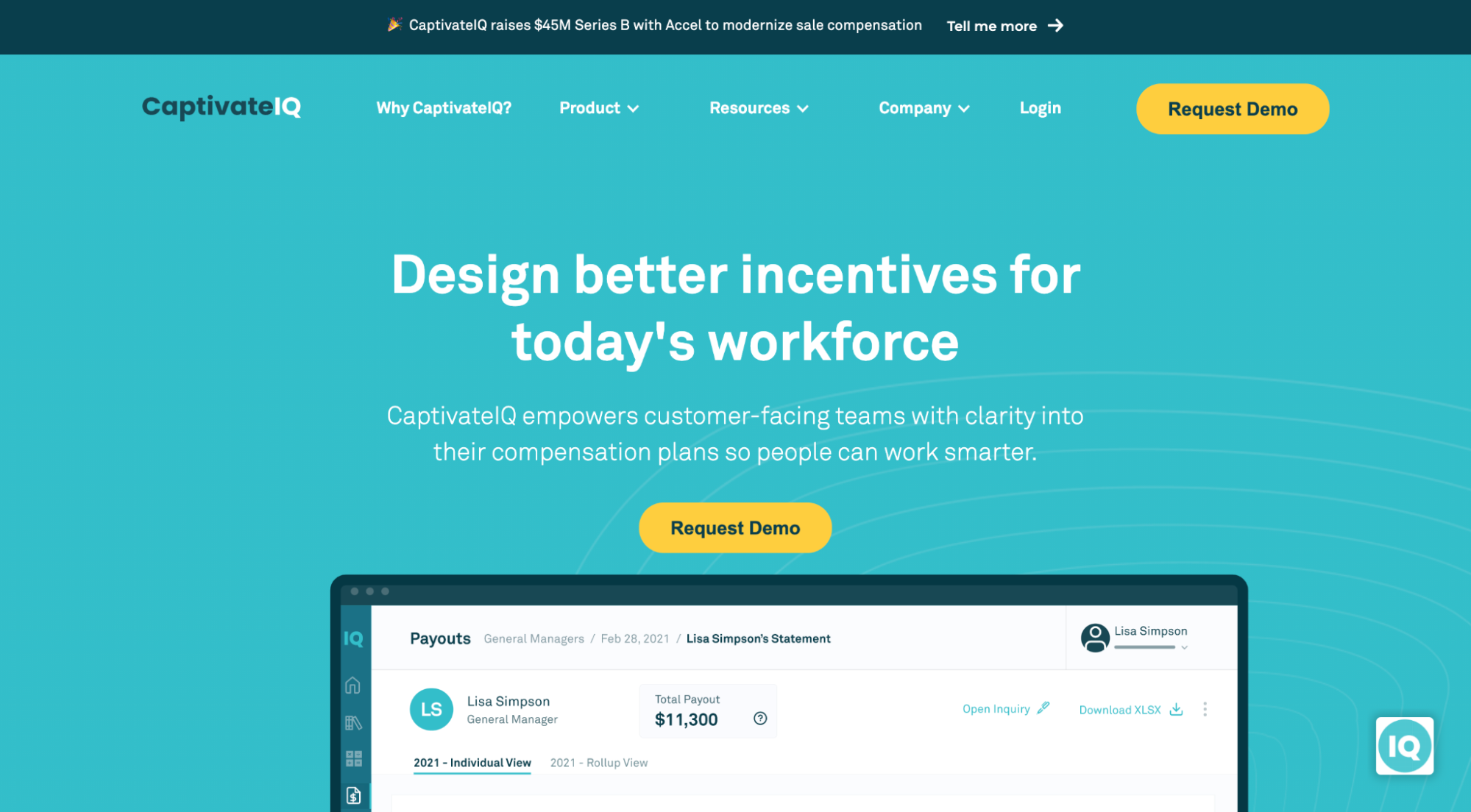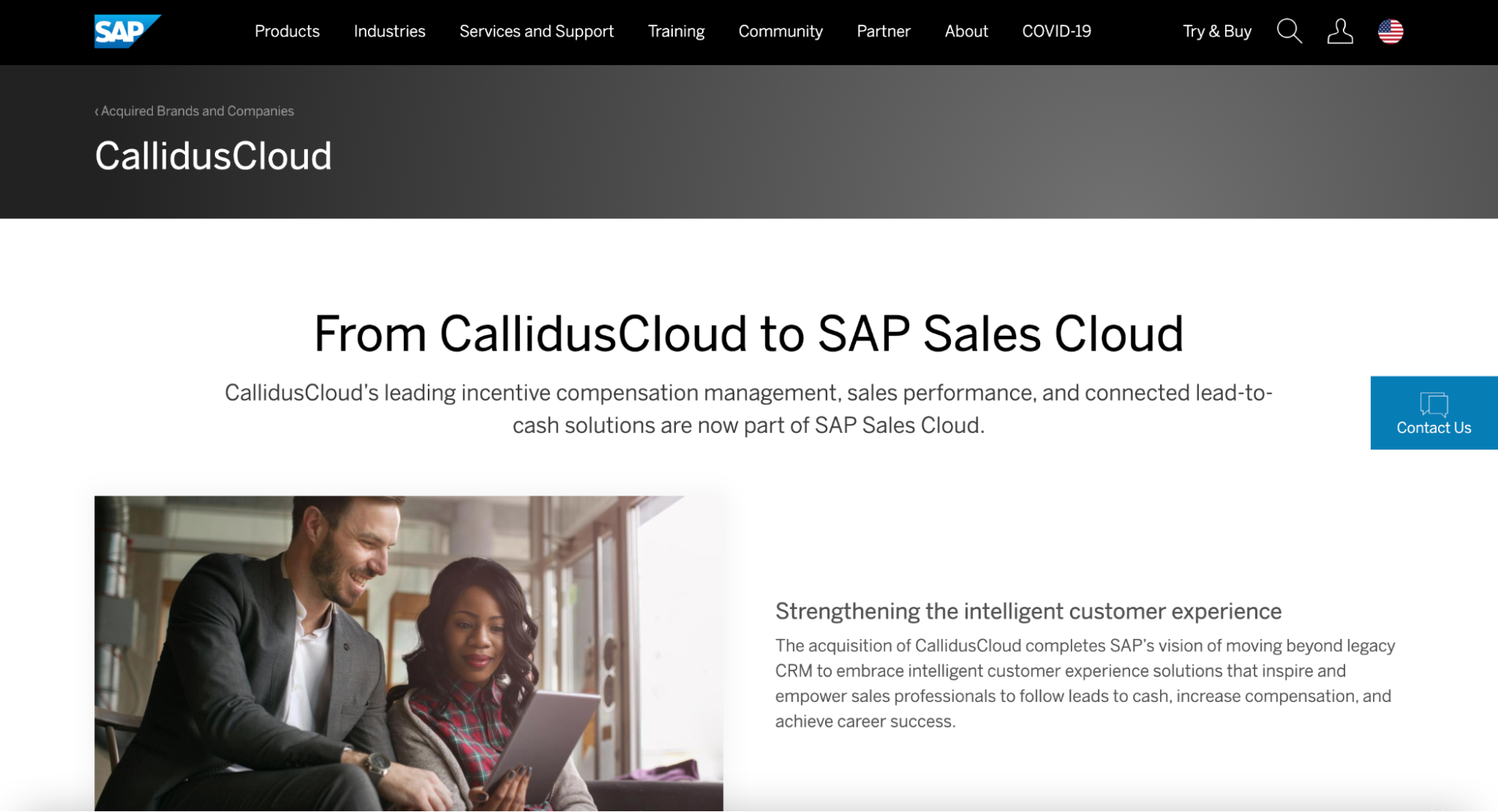You can’t have a company without sales. It’s why businesses with top sales talent thrive.
But what can you do to motivate your new sales reps, the very people who bring you business, customers, and profit?
Having an effective and competitive compensation plan is key for retaining top sales talent. Your employees feel valued, making them more likely to work harder and stay longer.
According to research from Boston Consulting Group, the happiest employees are the ones who feel appreciated. And when you offer competitive sales compensation plans, you show your appreciation.
In this guide, I’ll discuss sales compensation plans in more detail and how you can improve them for better results.
Let’s get started.
What Do We Mean By Sales Compensation Plans?
A sales compensation plan is an outline of how you’re going to pay sales reps for their contribution to your business. Think of it as a strategy that can drive your sales team’s performance and boost your revenue.
It includes every little detail related to a sales rep’s earnings—their base salary, variable pay, commission, and any other incentives or benefits they might be eligible for.
The main purpose here is to motivate the sales team and encourage positive behavior while simultaneously setting compensation expectations and standards.
4 Tools to Improve Sales Compensation Plans
Your sales compensation plans play a vital role when it comes to determining pay. Precisely why you should do your best to design it in a way that drives the right sales behaviors, align it with sales roles, and base it on your company culture.
But wouldn’t it be great to have tools that make the job even easier? Thought so.
Intuit QuickBooks Payroll
Intuit QuickBooks Payroll is one of the best payroll services in the market.
It collects and reports on your payroll taxes, among several other features like automatic payroll tax calculations, paycheque accuracy, and native payroll integration with QuickBooks. As a result, you’re left with sufficient time to focus on other important tasks related to your business.
This tool was primarily designed for small businesses that are looking for scalable payroll services and already use QuickBooks. The fact you get multiple plans starting at $4 per employee—all of which includes full-service payroll—is another plus.
CaptivateIQ

CaptivateIQ is a sales compensation software that has transformed how businesses compensate their hard-working sales team.
It offers an automated and flexible communication solution that completely eliminates the need to work with complicated spreadsheets. CaptivateIQ also provides useful insights to help you determine which one of your sales compensation plans works best.
You can use it to pay the salespeople accurately and on time, which, in turn, encourages them to be more productive. Moreover, there’s no need to worry about human errors or spend hours calculating commission every month.
SAP CallidusCloud

SAP CallidusCloud is a sales performance management solution that lets you automate commission tracking, calculation, and payouts. You can set quotas and territories based on historical data rather than just exemptions. The biggest benefit? Better accuracy.
The devs also offer automated sales training and onboarding to make it easier for your employees to understand and use the app without any supervision from the HR or office managers. Additionally, you can connect to the CallidusCloud SalesMotivate to promote learning management and sales through gamified inventive programs.
Iconixx Sales

Iconixx Sales is a dedicated sales commission calculator. It combines commission calculation with internal custom workflows, reporting, and forecasting.
The platform tries to remove advanced calculations and complicated spreadsheet reporting to let business owners and the sales team focus on more important tasks.
It has a transparent sales commission platform that allows teams and management to know how to achieve their goals. You can set up complex rules while maintaining complete transparency, thanks to their automated commission calculations feature.
The Basics of Sales Compensation Plans
Making a good sales compensation plan doesn’t have to be difficult. Once you understand the basics, chalking out the outline will become considerably easier.
Let’s take a look at the main components of a sales compensation plan.
Simplicity is Key
A good sales compensation plan should be easy to implement and benefit everyone. So it’s best to keep things straightforward and simple.
Below are a few characteristics of good sales compensation plans that you must keep in mind:
- Simple. Your compensation plan should be a simple summary, preferably one that fits on a single page.
- Casual. I’m going to go ahead and assume you want to ensure every person understands the plan. So it’s best to keep it casual and avoid using technical terms to ensure it relates directly to the desired effect you want to achieve.
- Responsive. Try to keep the total time between activity and compensation under two months. Trust me, it’ll give you better results.
- Fair and Easy. The whole point of having a sales compensation plan is to make it easy to measure, administer, and of course, ensure it’s fair and equal to everyone.
Keep the above pointers in mind when drafting a compensation plan for your company. You’ll be surprised at how effective everything will turn out.
Clear Compensation Plan Goals
Laying out business objectives is a crucial part of every strategy, and your sales compensation plan is no exception. But before you begin choosing your goals, you must be clear about your priorities.
This clarity will help you decide how to compensate your sales team in a way that works best for your business while simultaneously keeping them satisfied.
Below, I’ve compiled a list of some of the most common sales compensation plan goals.
Primary Goals of Sales Compensation Plans
- Boost revenue
- Increase cash flow
- Increase average deal size
- Boost to the tension rate
- Increase average contract length
- To give you a basic idea of how to go about things.
Secondary Goals of Sales Compensation Plans
- Cut down expenses
- Generate more targeted leads
- Drive customers for a specific product or service
- Acquire seed accounts
- Reduce the average discount size
- Manage deal flow
Different Types of Sales Compensation Plans
Here’s a list of the five most common compensation plan types you may want to consider:
Straight Salary Plan
Here, you only pay your salespeople a competitive salary similar to your other employees and nothing else. No bonuses, commissions, and limited (if any) sales incentives.
Salary Plus Commission Plan
These plans are structured in a way that assures a lower base salary to the salespeople in addition to the commission for every sale they make. The commission pay makes the majority of the total compensation.
Commission Only Plan
As the name suggests, salespeople only receive money for the business they bring into your organization and nothing else under this plan. Since there‘s no guarantee of income, many people don’t prefer this compensation plan.
Territory Volume Plan
A territory volume sales compensation plan is best suited for team-based corporate cultures. The territory volume is calculated at the end of every compensation period after which the total sales for the territory are split equally among all the sales reps who worked for that account.
Profit Margin Plan
Profit margin sales compensation plans compensate sales reps after taking into account how well the company is performing. Many start-ups use this plan because of their lack of liquidity.
Wondering how to find the best fit for your business? Consider the following questions:
- What is your overall budget?
- How many sales reps do you have?
- What kind of compensation plans do your rivals offer?
- What are the expectations of your salespeople concerning compensation?
In my opinion, finding out the kind of sales compensation plans offered by your competitors is the best bet. Just keep in mind the end result should be something that matches your team’s expectations.
Compensation Payouts
No matter how hard we wish for it, payday can’t be every day. You want to make sure your sales team knows that too.
Generally, you can take any of the following three routes when deciding on payday:
#1 When a Contract Is Signed
This works well to motivate your salespeople as they see the monetary benefit immediately upon closing the deal. The only issue here is paying directly after a contract is signed can cause cash flow problems if there’s a significant delay between the signed agreement and the first payment.
#2 When You Receive the First Payment
The entire focus here is on their clients, and when they pay make the payment. This gives salespeople incentive to chase after clients to make payments. Plus, there’s less lag between the revenue payments and
#3 After Every Payment
In this case, you wait for the customer to clear their dues before paying commission. Not only does this keep your cash flow positive, but also takes away any stress. It may still get complicated if your customers take too long to pay or have different renewing and paying specifics, though.
Set the Quotas and Expectations in Advance
This is hands down the most important part of creating a sales compensation plan where you set quotas for your team as a whole, as well as individual reps.
Deciding which quota to use is a task easier said than done. Luckily, you can choose between two main approaches to set quotas effectively.
Bottom-Up Approach
Under the bottom-up approach, you’ll consider your team’s capabilities, along with the perceived market opportunity to determine a realistic quota for each territory and/or sales rep.
It’s why the more data you have, the easier it’ll be to set quotas. Here are a few factors to consider to set quotas easily:
- Average contract value or average deal size
- Number of salespeople
- The average revenue per salesperson
- Number of qualified leads (per month or quarter)
- Percentage of qualified leads that close
The above considerations will give you a fair idea about how many deals it should be working, and what a reasonable quota should be.
Top-Down Approach
In the top-down approach, you use market data, along with your revenue targets, to determine what your team needs to bring in.
For instance, if your rivals pay their salespeople in the X to Y range, and your reps need to close the Y amount in total for your business to hit a specific goal, you can use the information to determine reasonable on-target earnings and the optimal team size.
3 Tricks for Sales Compensation Plans
Here are a few tricks to improve your sales compensation plans:
Align Your Plans
You should consider your company’s wider targets when creating a sales compensation plan. After all, the whole point of having a compensation plan is to push your team to achieve your established targets.
Here’s what your compensation plan should include facilitating alignment:
- Investor goals. This includes the written or value increases your investors want to see at the end of every sales period
- Target revenue. This indicates what you want your sales team to reach in terms of your revenue.
- Development calendar. This refers to the products you plan to sell, and the way product launches will affect your team’s sales approach.
Avoid Commission Plan Capping
Your sales compensation plan should successfully drive the behaviors you seek. But if you reduce incentives after your rep meets 120% of their quota, they’ll think it’s best to stop once they reach the estimated quota.
This will cause you to miss out on sales opportunities and achieve peak performance—all because your reps already hit the numbers and can hence, stop selling. Yikes.
Pick Worthwhile Incentives
Your salespeople should find your incentives motivating. If the incentives are enticing enough, they won’t be motivated to reach, and in certain cases, even exceed their goals.
You see, sales reps weigh the effort against compensation. Your job is to come up with a plan that has structured earnings and good incentives. At the same time, you don’t want to pay out high incentives, especially when the performance is low.
I recommend improving your sales forecasting. Doing this will allow you to see improvements in pipeline visibility, gain early insight into commission earnings, and experience enhanced seller performance.


